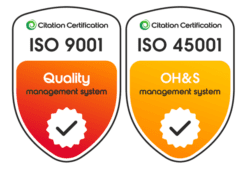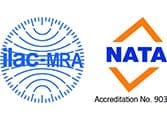Couplings and drawbars constitute the foundation of a variety of mechanisms, connecting the ends of adjacent parts or objects either in a partially mobile or solid fashion, respectively.
Couplings and drawbars constitute the foundation of a variety of mechanisms, connecting the ends of adjacent parts or objects either in a partially mobile or solid fashion, respectively.
Drawbars, in particular, find employment in joining vehicles to their hauled loads, most often in applications such as rail or road transport, and agricultural or mining equipment.
While they may be dwarfed in comparison to bigger, more complex machinery, these components are actually put to the test by heavy loads and inhospitable environments every day.
A considerable variety of coupling and drawbar styles exist, designed to meet a wide range of engineering requirements. While for some applications, mass-produced options may readily be available, in other cases a style needs to be adapted.
Custom-manufactured designs can be made to precisely fit the type of function at hand. Choosing the correct type and size of coupling can make the difference between the overall mechanism’s success and failure, and more than one coupling type may be suitable for any given application.
To select and design the most suitable type of coupling, one should keep in mind several considerations. First, it is imperative to know the forces and loads to which a coupling will be exposed to avoid under- or over-rating. In the former case, the coupling may not be able to sustain the allocated load and deform or break, therefore shortening its service life. In the second case, the coupling may be inflexible or cumbersome.
A second consideration is the degree of flexibility required. The correct type of coupling will not transfer stress or failure to the other components of the mechanism, sidestepping the need for any scheduled downtime for supplemental maintenance.
Third, attention should also be allocated to the conditions of the working environment of a device: temperatures, corrosive substances, and water or moisture may all adversely impact your coupling’s performance.
Finally, proper installation should address all design criteria, such as space requirements, misalignment, inertia, and, once again, environment characteristics. Preliminary function testing may prove to be extremely valuable in foreseeing any challenges that the equipment may have to face during the course of its operation.
Although seemingly straightforward components, if couplings or drawbars are designed incorrectly, they may suffer from premature fatigue failure. Such incidents can often happen without warning and be destructive to property and harmful to any bystanders.
Other, more expensive equipment, such as conveyances, may also be affected, leading to costly production downtime. The same is liable to happen in case of an overload, which is why proof load testing is advisable on all load-bearing components of a device, including couplings and drawbars.
Other than operation beyond design capabilities, potential causes of failure include improper installation and suboptimal maintenance.
Performing regular visual inspections is at the base of good coupling and drawbar maintenance. Visual inspections may help spot any signs of wear or fatigue and should ensure that design parameters are consistently maintained during operation. For most couplings, such maintenance is compulsory every year.
For couplings operating in adverse environments or particularly demanding working conditions, maintenance should be more frequent. Finally, maintenance performed on each coupling should be adequately documented for audit purposes, along with its date.
Given the potentially catastrophic consequences of a coupling failure, visual inspection of these components is not adequate and they should be, and often are, subject to regular testing. Australian Standard AS 3751 – Underground mining – Slope Haulage – Couplings, Drawbars, and safety chains requires couplings and drawbars to be tested at a minimum frequency of every 12 months from the date of placing into service.
In fact, this piece of equipment is especially critical where employed in drift mining or lifting applications. Here, the potential for damage is far greater, because if a load breaks loose, gravity will cause it to plummet and ultimately crash.
Periodic testing of couplings and drawbars focuses on verifying the presence of any fatigue cracks in the material, most commonly via a Magnetic Particle Examination. Before installation, techniques such as Hardness Testing and function testing may also be employed.
Couplings & Drawbars Services
Reliance Hexham has extensive experience in designing, manufacturing, testing and repairing custom-made coupling and drawbar solutions for specialised applications. Testing services can be arranged both on-site or on our premises in line with your needs.
Projects that we have successfully delivered in the past include male couplings, female couplings, extended drawbars, pivoting drawbars, drawbars for shuttle cars, and spring-loaded couplings for the mining industry, steel and aluminium processing, construction and materials handling.
As with any mechanical device, a coupling or drawbar needs to match its intended purpose and application parameters.
Beyond these, parameters such as functional fit and working environment also need to be considered. This is crucial for minimising long-term servicing and replacement costs, as well as equipment downtime.
The know-how of our engineering team allows us to identify the ideal coupling design for your desired deliverables.
Once the design has been created, our qualified tradespeople will proceed to manufacture and test your custom-made components.
Our scope for couplings, drawbars and safety chains may include:
- Item Assessment
- Design
- Replacement of Parts
- Repair of Parts
- Butt welding
- Heat Treatment
- Hardness Testing
- Proof Load Testing
- Dimensional Check
- Function testing
- Magnetic Particle Examination
- Protective Coating
- Final Inspection
- NATA Certification
All couplings, drawbars and safety chains are manufactured and repaired for mining applications to AS 3751 or the relevant Standard and are proof load tested, magnetic particle tested and NATA certified.
Reliance Hexham can produce a range of haulage equipment in numerous different sizes to suit our customers’ unique needs. Please do not hesitate to contact our team for expert advice on your specific application.











